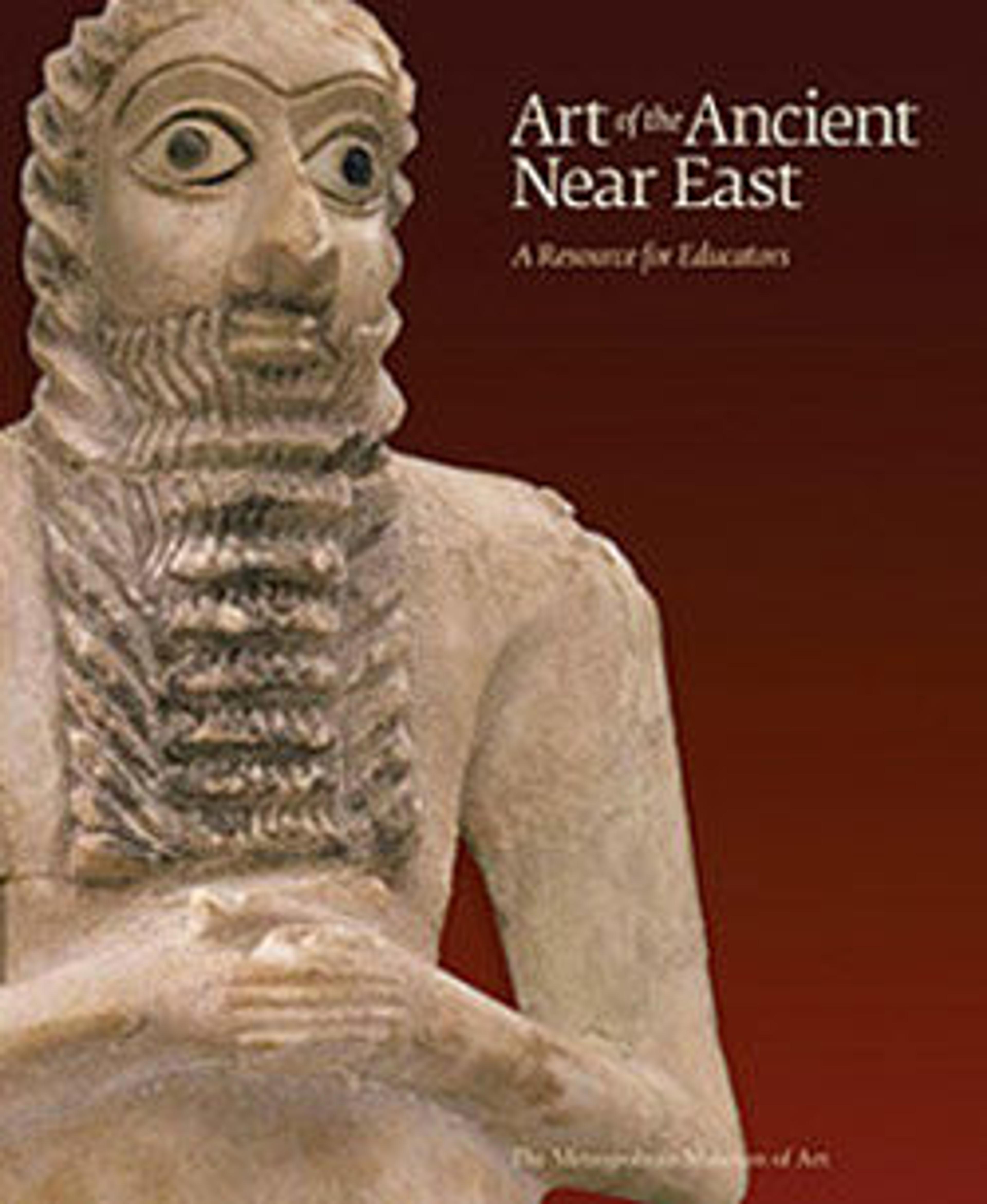Head of a king
The Sasanian dynasty of Iran ruled an area from the Euphrates River to Bactria from the third century A.D. until the Islamic conquest in the seventh century, controlling for much of that time the Silk Route from Byzantium to China.
Dating from the fourth century A.D., this silver head of a Sasanian king is an exquisite example of Sasanian metalwork. It is raised from a single piece of silver with chased and repoussé details. The king wears simple ovoid earrings and a beaded necklace of Sasanian fashion. His powerful stare and characteristic arched nose seem to suggest that the artist was attempting to convey a sense of majesty rather than an individual likeness. The identity of the subject of such representations, in relief or in the round, can often be determined by comparison of facial features and details of the crown with those of kings portrayed on Sasanian coins of the period. In this case, however, the crescent that decorates the crenellated crown and the striated orb that rises above it have no exact parallel. A combination of stylistic details suggests that it was made sometime in the fourth century, perhaps during the reign of Shapur II (A.D. 310–379). The lower section of this head has been cut away, so there is no way of knowing whether it was originally part of a larger sculpture composed of several pieces or a decorative bust intended to be seen alone.
Dating from the fourth century A.D., this silver head of a Sasanian king is an exquisite example of Sasanian metalwork. It is raised from a single piece of silver with chased and repoussé details. The king wears simple ovoid earrings and a beaded necklace of Sasanian fashion. His powerful stare and characteristic arched nose seem to suggest that the artist was attempting to convey a sense of majesty rather than an individual likeness. The identity of the subject of such representations, in relief or in the round, can often be determined by comparison of facial features and details of the crown with those of kings portrayed on Sasanian coins of the period. In this case, however, the crescent that decorates the crenellated crown and the striated orb that rises above it have no exact parallel. A combination of stylistic details suggests that it was made sometime in the fourth century, perhaps during the reign of Shapur II (A.D. 310–379). The lower section of this head has been cut away, so there is no way of knowing whether it was originally part of a larger sculpture composed of several pieces or a decorative bust intended to be seen alone.
Artwork Details
- Title:Head of a king
- Period:Sasanian
- Date:ca. 4th century
- Geography:Iran
- Culture:Sasanian
- Medium:Silver, mercury gilding
- Dimensions:15 3/4 x 9 x 7 7/8 in. (40 x 22.9 x 20 cm)
- Credit Line:Fletcher Fund, 1965
- Object Number:65.126
- Curatorial Department: Ancient West Asian Art
Audio
7019. Head of a King, Part 1
0:00
0:00
We're sorry, the transcript for this audio track is not available at this time. Please email info@metmuseum.org to request a transcript for this track.
Listen to more about this artwork
More Artwork
Research Resources
The Met provides unparalleled resources for research and welcomes an international community of students and scholars. The Met's Open Access API is where creators and researchers can connect to the The Met collection. Open Access data and public domain images are available for unrestricted commercial and noncommercial use without permission or fee.
To request images under copyright and other restrictions, please use this Image Request form.
Feedback
We continue to research and examine historical and cultural context for objects in The Met collection. If you have comments or questions about this object record, please contact us using the form below. The Museum looks forward to receiving your comments.
